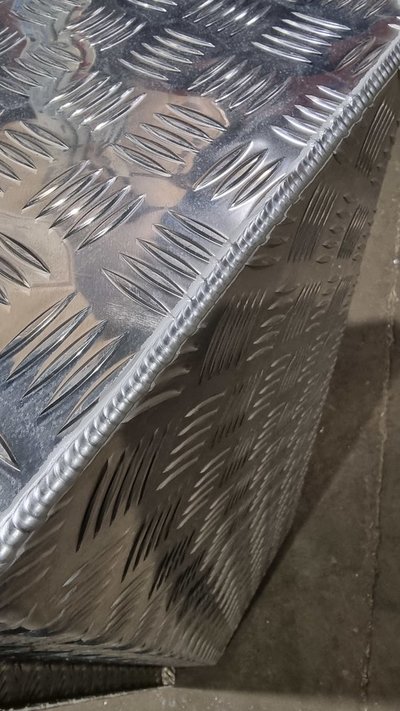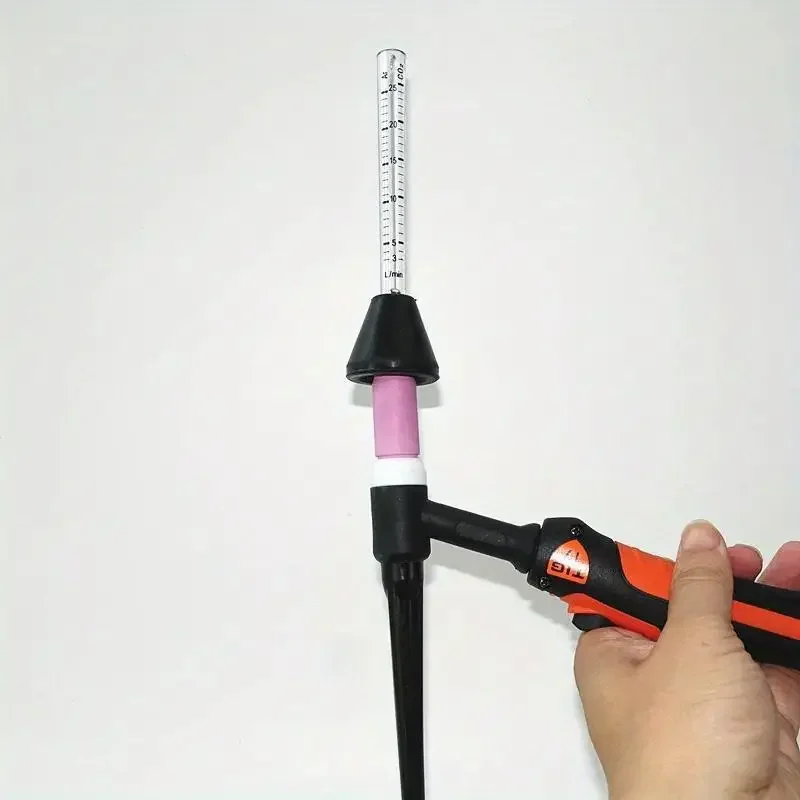You are using an out of date browser. It may not display this or other websites correctly.
You should upgrade or use an alternative browser.
You should upgrade or use an alternative browser.
Aluminium tig guide getting started.
- Thread starter Richard.
- Start date
Ho there everyone. I changed the settings to the following.
Peak current 80amps
Basic current 30%
Arc force 10amps
Pulse frequency 100hz
Pulse duty 0
Cleaning width area 30%
I cleaned the Aluminum qith a wire brush.
When welding on a flat face it makes a good puddle and its welding very good looking. As soon as I try to weld a outside corner its a mess. The puddle doesnt want to form properly and also the filler wire doesnt want to melt it only makes a big ball and then the corner burns a big hole.
Its realy frustrating.
Here and there the corner welds ok but overall its a massive struggle
Peak current 80amps
Basic current 30%
Arc force 10amps
Pulse frequency 100hz
Pulse duty 0
Cleaning width area 30%
I cleaned the Aluminum qith a wire brush.
When welding on a flat face it makes a good puddle and its welding very good looking. As soon as I try to weld a outside corner its a mess. The puddle doesnt want to form properly and also the filler wire doesnt want to melt it only makes a big ball and then the corner burns a big hole.
Its realy frustrating.
Here and there the corner welds ok but overall its a massive struggle
Show us a photo of your tungsten after a weld,
Dutch Welder
Member
- Messages
- 411
- Location
- Oss, The Netherlands
Stop using pulse, you are complicating it way more then you need too.
Get it welding correctly on unpulsed AC, then you can finetune it with pulse (but I doubt you would need it, most people I know don't use pulse on AC)
Get it welding correctly on unpulsed AC, then you can finetune it with pulse (but I doubt you would need it, most people I know don't use pulse on AC)
Looks more like a gas problem to me, not enough and or bad torch angle, it doesn't look like anodised to me, I haven’t come across anodised aluminium chequer plate, I will say this it quite often comes with an oily scum, and because of the Durbar it's difficult to rub with a rag that's got brake cleaner on it without leaving half the rag caught yo the plate
I have to agree
I buzzed up some ally tread for a guy at work a while back...
3mm treadplate... he cut it with a jigsaw, and had it pressed up.
I didn't wipe it.. brush it.. nothing...
No pulse.. 120 ish amps.. 2.4mm filler.. white tungsten..

This is the most useful all-in-one alu TIG resource I've come across by miles, so adding my queries here.
I've come from welding almost exclusively stainless steel, and am part way through my first alu job after knocking up a welding cart for practice. It's all 1.6-3.2mm box section, and while it's all been a bit of a learning curve I have a hard time getting nice fillet welds, particularly on butt joints. Anyone got any tips on getting the root of the joint to wet out before the whole thing gets too hot and messy? Have tried messing with the frequency but I'm not seeing any consistent results.
I've come from welding almost exclusively stainless steel, and am part way through my first alu job after knocking up a welding cart for practice. It's all 1.6-3.2mm box section, and while it's all been a bit of a learning curve I have a hard time getting nice fillet welds, particularly on butt joints. Anyone got any tips on getting the root of the joint to wet out before the whole thing gets too hot and messy? Have tried messing with the frequency but I'm not seeing any consistent results.
Munkul
Jack of some trades, Master of none
- Messages
- 7,893
- Location
- Cumbria
It sounds counter-intuitive, but the solution is to turn the amps UP. Go hotter, and faster. It'll wet out the fillet before everything gets too hot. You can't hang around with aluminium, you have to start hot and move as soon as the puddle gets going. If you can't form a puddle in a few seconds, its too cold.This is the most useful all-in-one alu TIG resource I've come across by miles, so adding my queries here.
I've come from welding almost exclusively stainless steel, and am part way through my first alu job after knocking up a welding cart for practice. It's all 1.6-3.2mm box section, and while it's all been a bit of a learning curve I have a hard time getting nice fillet welds, particularly on butt joints. Anyone got any tips on getting the root of the joint to wet out before the whole thing gets too hot and messy? Have tried messing with the frequency but I'm not seeing any consistent results.
Edit : what do you mean, fillet welds on butt joints? Its either a butt or a fillet... I assume you mean fillet.
I have wondered if that's the case, I'll give it a go with fresh hands today and pay extra attention to the arc length. Is it worth maxing the frequency out at 200hz or do I risk making blowouts more likely?It sounds counter-intuitive, but the solution is to turn the amps UP. Go hotter, and faster. It'll wet out the fillet before everything gets too hot. You can't hang around with aluminium, you have to start hot and move as soon as the puddle gets going. If you can't form a puddle in a few seconds, its too cold.
Edit : what do you mean, fillet welds on butt joints? Its either a butt or a fillet... I assume you mean fillet.
Re: butts I mean square tubes that are a T-butt arrangement (rather than a mitred corner), of which I have many, particularly with thinner walled tubes butting up against continuous heavier ones, making my life extra spicy.
I do have pulse but I found it less useful than manually pulsing with the pedal. It's a Lorch HandyTIG 200 for referenceHave you got Pulse that can help slowing down it all falling on the floor.
Funnily enough I find stainless much harder to get nice results with than alloy.
Munkul
Jack of some trades, Master of none
- Messages
- 7,893
- Location
- Cumbria
High frequency is only useful for welding coke cans, you lose too much arc energy in the wave crossing zero so much. I agree that you don't need pulse, it's only really useful on outside corner joints if you're being lazy IMO.I have wondered if that's the case, I'll give it a go with fresh hands today and pay extra attention to the arc length. Is it worth maxing the frequency out at 200hz or do I risk making blowouts more likely?
Re: butts I mean square tubes that are a T-butt arrangement (rather than a mitred corner), of which I have many, particularly with thinner walled tubes butting up against continuous heavier ones, making my life extra spicy.
60-120hz is where you'll spend most of your time. 120hz is good for focusing the arc, 60hz is good for wetting out a nice open joint. Ultimately at this stage you just want to set it to a number and forget about it. I like 90hz as my default setting, and 30% balance.
What tungsten are you using, what size and what amps? What balance?
If you're using the foot pedal, you should set the amps so you can floor the pedal at the start, and come off just slightly once you start travelling.
Or, just use the torch button in 2T. You can control the heat just as effectively by using filler and travel speed.
I'll use a 2.4 lanth/E3 tungsten, semi sharpened, so after a minute of welding the ball on the end is a little bit smaller than the tungsten. It will slowly grow, especially using higher amps. I'll just use it until I dip
I see what you mean, yes mismatching thickness tubes on ally is a challenge, just favour the heavier side with the arc.
Munkul
Jack of some trades, Master of none
- Messages
- 7,893
- Location
- Cumbria
looking good thereBeen using 2.4 Zirc and E3, 25-30% balance and sitting at 120hz right now. Have been running these joints (3.2mm base/1.2mm leg) with 160A max, the advice has definitely helped ta!
 I have the same set, handy tig 200, my favourite welding set bar none.
I have the same set, handy tig 200, my favourite welding set bar none.



